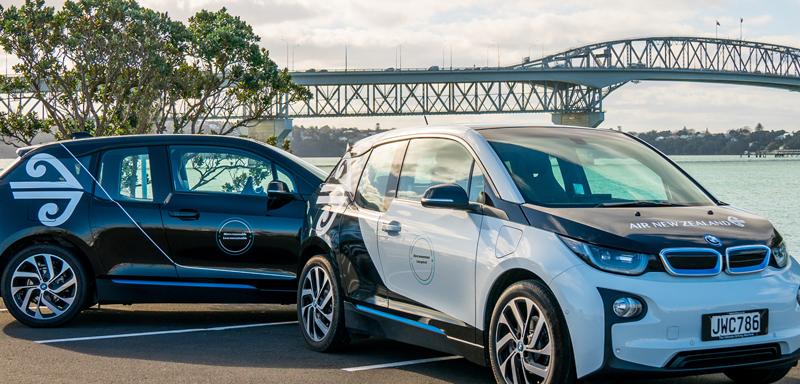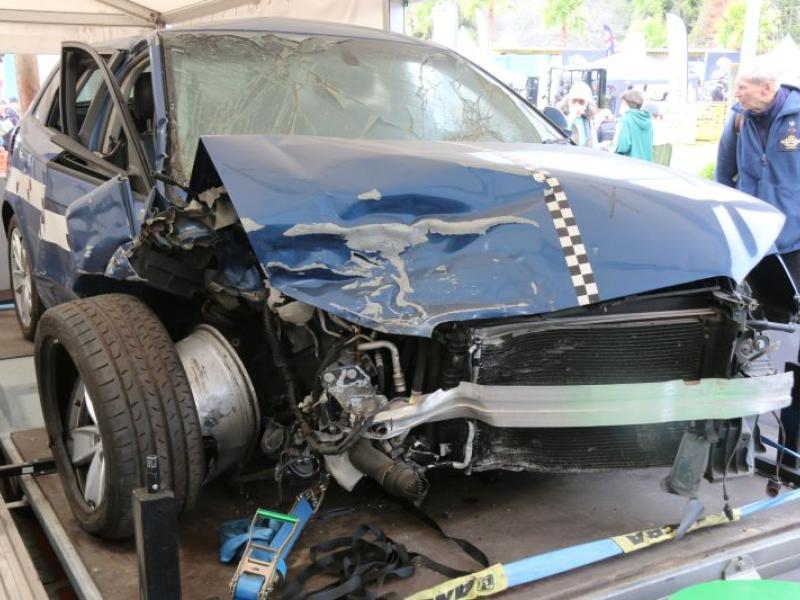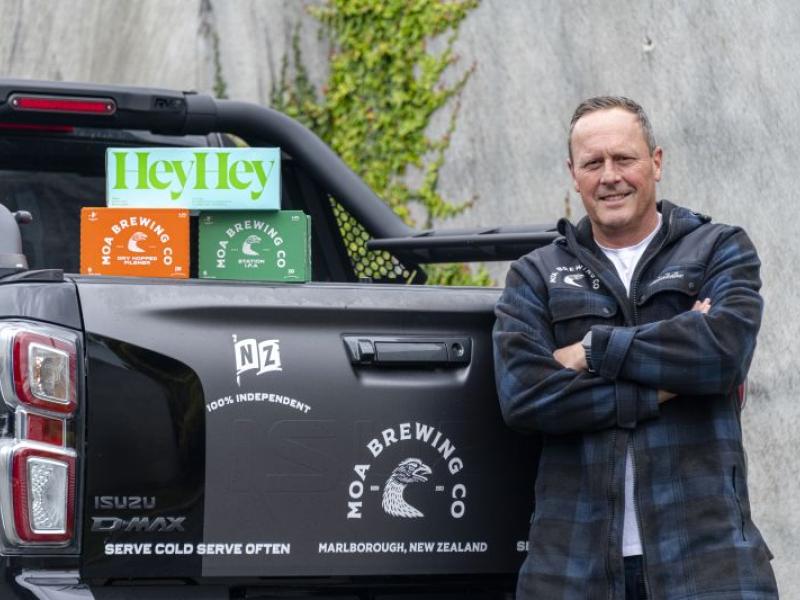In March 2016 Air New Zealand announced it was transitioning more than 75 of its light vehicles to electric, saving around 65,000 litres of fuel per year in the process.
Glenn Baker reports.
Twelve months on, the airline is well on the way to achieving that objective. It was a bold decision, and one that reflects the ongoing commitment to sustainability and carbon reduction across the business of our national carrier.
Twelve months after announcing its intention to electrify a large proportion of its light vehicle ground fleet, Air New Zealand is realising both the environmental and economical benefits of the move.
With electric vehicles (EVs) approximately seven times cheaper to run than fossil-fuel powered vehicles, it’s estimated that the move to EVs is saving around 65,000 litres of fuel per year for the airline.
While it’s too soon to provide any operational performance data on the EV fleet, staff have nothing but positive things to say about the transition, and are appreciative of the environmental and economical impact of the transition.
The airline has now commissioned all the EVs on its original shopping list – comprising 36 fully electric BMW i3 cars for its sales team, 12 Mitsubishi Outlander Plug-in Hybrids for use on longer range trips, and 28 Renault Kangoo Maxi ZE 100 percent electric vans for use on and around airports throughout New Zealand.
It was a carefully considered selection process. The BMW i3 was named New Zealand Car of the Year for 2015 and has won numerous awards overseas. As well as being fully electric it has a totally sustainable design, with much of its interior and body crafted from the same carbon fibre reinforced polymer that you’ll find on the fuselage of the airline’s Boeing 787-9 Dreamliner fleet.
The i3s, kitted out in bold Air New Zealand livery, have been making their presence felt on urban streets. It’s a standout vehicle in so many ways and a major step down the road to true zero-emission motoring. Not only is the i3 manufactured using sustainable materials, there is even end-of-life sustainability in the form of the ability to recycle almost everything that goes into its production.
Charging the i3 can be completed in six to eight hours from a conventional household power point (although you can shave 30 percent off that time if the optional BMW Wallbox is installed).
Range is not a problem for the average commute either – the claimed range is between 130 and 160 kilometres on electric power and up to 340 kilometres when the Range Extender (Rex) – a 647cc petrol powered generator – kicks in.
The Kangoo is a unique choice too, as Air New Zealand is the first customer in this country to deploy the vehicle. Local and overseas reports estimate real world range between 100 and 120km km per charge, depending on load and temperature.
And speaking of load, one of the key features of this electric van – the biggest in the Kangoo line-up – is its ability to carry lengthy cargo items. The passenger seat folds flat into the floor, and a barrier swings around the driver’s seat, which means items of up to 2.7 metres can be easily accommodated.
As well as introducing the electric vehicles progressively over 2016, Air New Zealand has also been busy installing charging points at its key car parking facilities to support the company’s new electric vehicles. This was in addition to the charge points that it had already installed in a number of the airline’s customer parking facilities.
Electric is the theme right across Air New Zealand’s airport ground service equipment as well – next time you’re at an airport see if you can spot the electrified golf carts and tractors out on the tarmac.
And where electric options don’t currently exist, the airline is working with Z Energy to purchase bio-diesel from its site under development in Wiri.
Following on from its electric vehicle announcement early last year, in October 2016 Air New Zealand launched an initiative, along with Mercury Energy and with the support of Westpac, to increase the number of EVs on New Zealand roads by 75 percent within three years.
This initiative targets more than 30 leading businesses committing to transition at least 30 percent of their company vehicle fleets to plug-in electric vehicles by 2019.
A brief profile
Air New Zealand has just over 100 vehicles in its light vehicle fleet – which includes cars, SUVs, vans and utes.
The fleet is a mixture of both owned and leased vehicles, and as you would expect with price-tags well above diesel or petrol equivalents, the 75 electric (and hybrid) vehicles are all leased.
The upgrade policy for leased vehicles is obviously tied in with the length of the lease. For vehicles that the airline owns, mileage and vehicle age are major considerations, along with a range of other factors.
The airline also chooses to manage its entire fleet internally, owing to the fact that it is a mix of leased and owned vehicles. It partners with several vehicle leasing companies and, as with any business partnership, believes excellent communication is the key to making these relationships work successfully over the years.
Not surprisingly, vehicle maintenance is a mix of internal and external management. For the leased vehicles maintenance management falls in line with manufacturer policies – and for vehicles the airline owns, maintenance is in accordance with the vehicle warranty requirements or standard servicing guidelines (such as six months or every ten thousand kilometres).
Health and safety
As part of its programme to transition to electric vehicles, Air New Zealand has been conducting training and driver awareness sessions with its staff. This has included considerations around how to safely charge the BMW i3s, Mitsubishi Outlander Plug-in Hybrids and Renault Kangoo vans at the airline’s own charging stations, as well as the homes of staff members.
It goes without saying that airline staff driving the electric vehicles are also required to comply with New Zealand road rules at all times.






